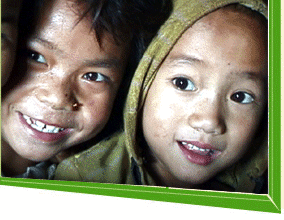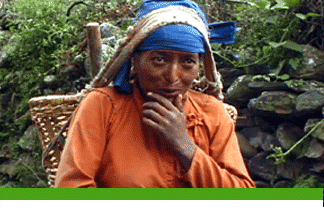|
| |
|
| |
| Travel Discussion |
Our online
travel community,asking questions and sharing
advice
More

|
|
| |
| |
|
|
| PEOPLE & SOCIETY |
 |
|
Nepal has a long-standing feudal tradition with the priestly class of Brahmins and the warrior class of Chhetris dominating the caste-based hierarchy. Nepalese also divide themselves into Paharis, Madeshis and Bhotias: hill people, plains folk and those from the northern border respectively. The sure-footed Sherpas and Tamangs live a largely nomadic life in the upper Himalayas. Madeshis are largely of Tibetan-Burmese origin including groups such as the Rais, Limbus, Jirels, Gurungs, Thapalis and Chepangs.
The plains-settlers are mostly Indo-Aryan groups like the Tharus, Rajputs, Rajvashis, Dhimlas and Dhangars. Across communities males dominate and male life expectancy is, not surprisingly, higher.
The Newaris, who make up about 4% of the population, are thought to be among the earliest inhabitants of this mountain country. They practice a synthesis of Buddhism and Hinduism and Tibetan influences can be seen in their language and art. Newari cuisine and art stands apart from the others. Strong flavours, heavy spice and buffalo meat figure prominently on the table. Newari wall hangings called Paubha paintings are simpler versions of the Tibetan Thanka.
For a long time the inhabitants of the terai, tribes such as the Tharus, Safars, Yadavs, Rajvanshis and Dhimlas and the resident fauna, were protected by marauding hordes of malarial mosquitoes. With the coming of the road (east-west highway), quinine and insect repellent, the terai is now accessible like never before. With the coming of airplanes and canned oxygen, so too are the great Himalayas. Consequently all of Nepal, people, animals, and the land alike, is dealing with the angst of 'development'.
There is a sizeable population of Indians and Tibetans in Nepal too. In many cases, they settled generations ago and are now indistinguishable from the indigenous people
|
|
| |
|
|





